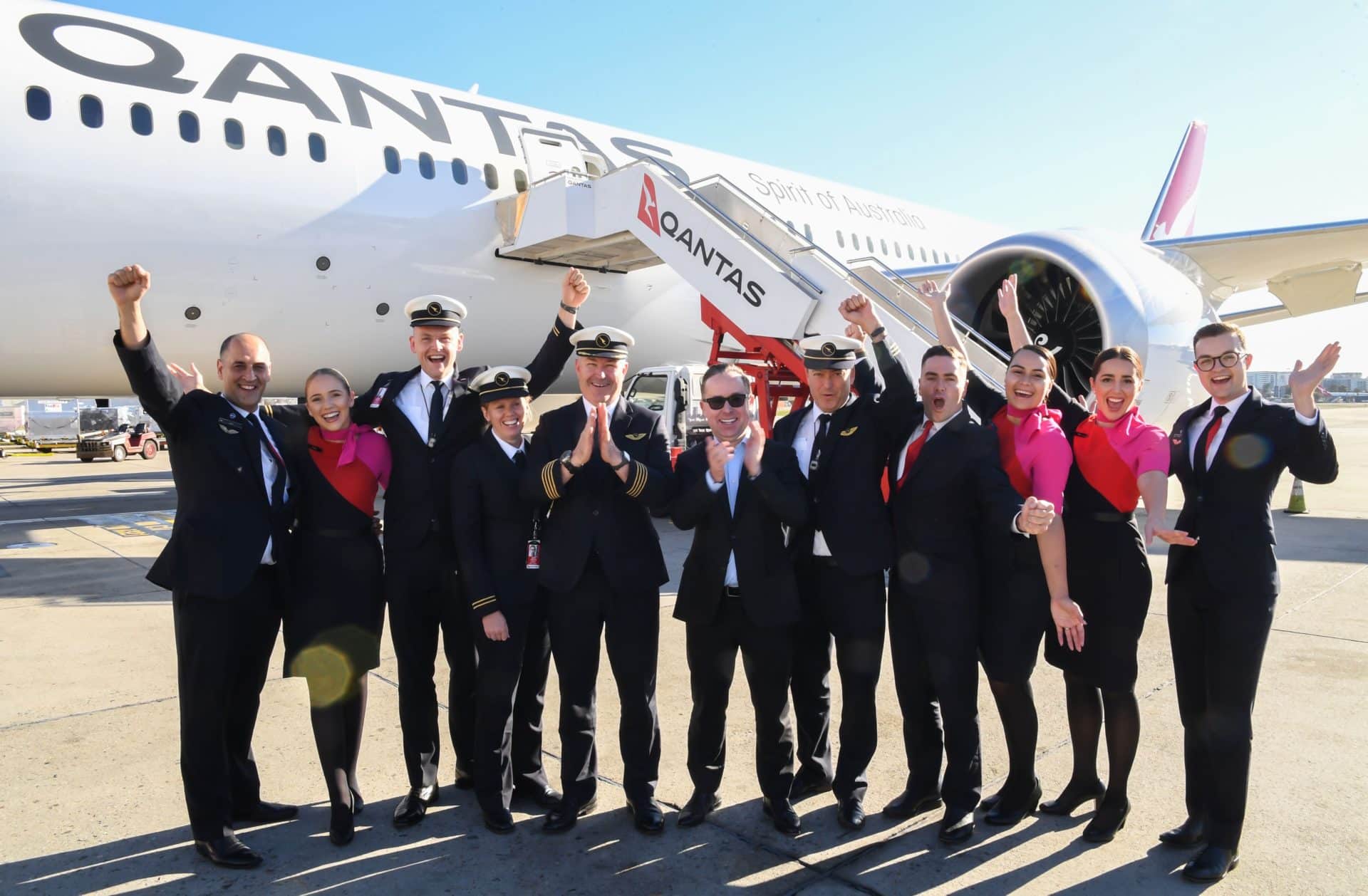Latest News.
Record-breaking Qantas New York to Sydney flight touches down

The first non-stop commercial airline flight from New York to Sydney has landed after 19 hours 16 minutes in the air.

A total of 49 passengers and crew were on the flight, which was used to run a series of experiments to assess health and well-being onboard. Data from these experiments will be used help shape the crew rostering and customer service of Qantas’ ultra long haul flights in future – including Project Sunrise (opens in new window).
Tests ranged from monitoring pilot brain waves, melatonin levels and alertness, through to exercise classes for passengers.
Cabin lighting and in-flight meals were also adjusted in ways that are expected to help reduce jetlag, according to the medical researchers and scientists (opens in new window) who have partnered with Qantas.
“We know ultra long haul flights pose some extra challenges but that’s been true every time technology has allowed us to fly further. The research we’re doing should give us better strategies for improving comfort and wellbeing along the way.
Arriving in Sydney, Qantas Group CEO Alan Joyce said: “This is a really significant first for aviation. Hopefully, it’s a preview of a regular service that will speed up how people travel from one side of the globe to the other.
“Night flights usually start with dinner and then lights off. For this flight, we started with lunch and kept the lights on for the first six hours, to match the time of day at our destination. It means you start reducing the jetlag straight away.
“What’s already clear is how much time you can save. Our regular, one-stop New York to Sydney service (QF12) took off three hours before our direct flight but we arrived a few minutes ahead of it, meaning we saved a significant amount of total travel time by not having to stop,” added Mr Joyce.
Qantas Captain Sean Golding, who led the four pilots operating the service, said: “The flight went really smoothly. Headwinds picked up overnight, which slowed us down to start with, but that was part of our scenario planning. Given how long we were airborne, we were able to keep optimising the flight path to make the best of the conditions.
“We had a lot of interest from air traffic controllers as we crossed through different airspace because of the uniqueness of this flight. We also had a special sign off and welcome home from the control towers in New York and Sydney, which you don’t get every day.
“Overall, we’re really happy with how the flight went and it’s great have some of the data we need to help assess turning this into a regular service,” said Captain Golding.
Two more research flights are planned as part of the Project Sunrise evaluations – London to Sydney in November and another New York to Sydney in December. Emissions from all research flights will be fully offset.
A decision on Project Sunrise is expected by the end of the year.
Images can be accessed through the following links and are to be credited as: Photo by James D Morgan/Qantas.

Aviation
Nepal Plane Crash: 18 Dead as Aircraft Crashes During Takeoff pilot survives

On July 24, 2024, a tragic accident unfolded at Tribhuvan International Airport in Kathmandu when a Saurya Airlines aircraft crashed during takeoff.
The incident occurred around 11:00 AM local time as the flight, bound for Pokhara, was preparing for departure. The aircraft, carrying 19 individuals including the aircrew, crashed shortly after lifting off the runway. According to PTI, “at least 18 people were killed” in the accident.
The casualties included 18 Nepalis and one Yemeni citizen, all of whom were employees of Saurya Airlines, as confirmed by police. The aircraft was en route for technical maintenance at the time of the crash.
This led in the crash of Yeti Airlines Flight 691, which killed 72 lives:Click here
Images released by Nepal police showed thick smoke pouring from the burning wreckage on the runway. Eyewitnesses, as reported by The Kathmandu Post, described how the plane flipped after its wing-tip struck the ground during takeoff.
The impact led to an immediate fire, and the aircraft subsequently plunged into a gorge on the eastern side of the runway. Rescue operations commenced swiftly, with police and firefighters arriving at the scene to control the situation.
The aviation authority confirmed that rescue efforts were initiated immediately, but the crash underscores the persistent dangers associated with air travel in Nepal. The country’s challenging mountainous terrain often contributes to aviation risks.
Man Falls From Airplane Door In Indonesia After Staff Pull Back Stairs:Click here
The pilot of the aircraft survived the crash and was transported to Kathmandu Medical College Hospital for treatment, as reported by a doctor at the hospital who was not authorized to speak to the media.
In response to the incident, Tribhuvan International Airport, the primary hub for both international and domestic flights in Nepal, was closed as emergency crews worked at the site.
-

 Travel1 week ago
Travel1 week agoAir India to Expand US Operations with Three New Routes After a Decade
-

 Travel2 weeks ago
Travel2 weeks agoWhy We Should Avoid These Stamps in a Passport
-

 Airlines1 month ago
Airlines1 month agoInvestigations Reveal Fake Chinese Titanium in Boeing and Airbus Jets
-

 Tech4 weeks ago
Tech4 weeks agoChina’s CATL Plans 1,800-Mile Electric Plane Launch by 2027
-

 Airport3 days ago
Airport3 days agoTop 10 Largest Airports in the World by Size
-

 Aerospace4 weeks ago
Aerospace4 weeks agoChina’s Fighter Jets Turn Wings into Autonomous Drones
-

 Airlines4 days ago
Airlines4 days agoAir India Rolls Out A350s for Delhi-New York JFK and Newark Routes
-

 Defence3 weeks ago
Defence3 weeks agoBoeing Enhances Chinook with New Engines and Block II Upgrades at $96 Million







